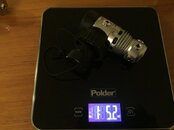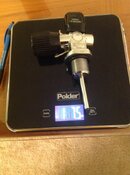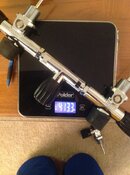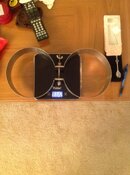Bigeclipse
Contributor
All,
Just trying to get a rough idea of what to expect going from single steel to double (yes I know the whole story of doing a weight check...etc. just looking for a place to start). Currently in fresh water cold diving with drysuit I wear 15lbs lead, steel backplate (6lbs) with steel cambands(not plastic...add probably 1lb negative), and a STA (2lbs) along with a Faber FX 100 (which is about -.5lbs empty). I will be going to double tank Worthington x7-100 which are a bit more negative compared to the Faber FX100s. How negative are a typical manifold and tank bands? I know I will add another reg set so that may be another say 2-4lbs negative as well. Any thoughts and considerations to get me a ballpark. I will be doing the proper weight check when I get to the water, just want an idea of where I might end up. Thanks!
Just trying to get a rough idea of what to expect going from single steel to double (yes I know the whole story of doing a weight check...etc. just looking for a place to start). Currently in fresh water cold diving with drysuit I wear 15lbs lead, steel backplate (6lbs) with steel cambands(not plastic...add probably 1lb negative), and a STA (2lbs) along with a Faber FX 100 (which is about -.5lbs empty). I will be going to double tank Worthington x7-100 which are a bit more negative compared to the Faber FX100s. How negative are a typical manifold and tank bands? I know I will add another reg set so that may be another say 2-4lbs negative as well. Any thoughts and considerations to get me a ballpark. I will be doing the proper weight check when I get to the water, just want an idea of where I might end up. Thanks!








